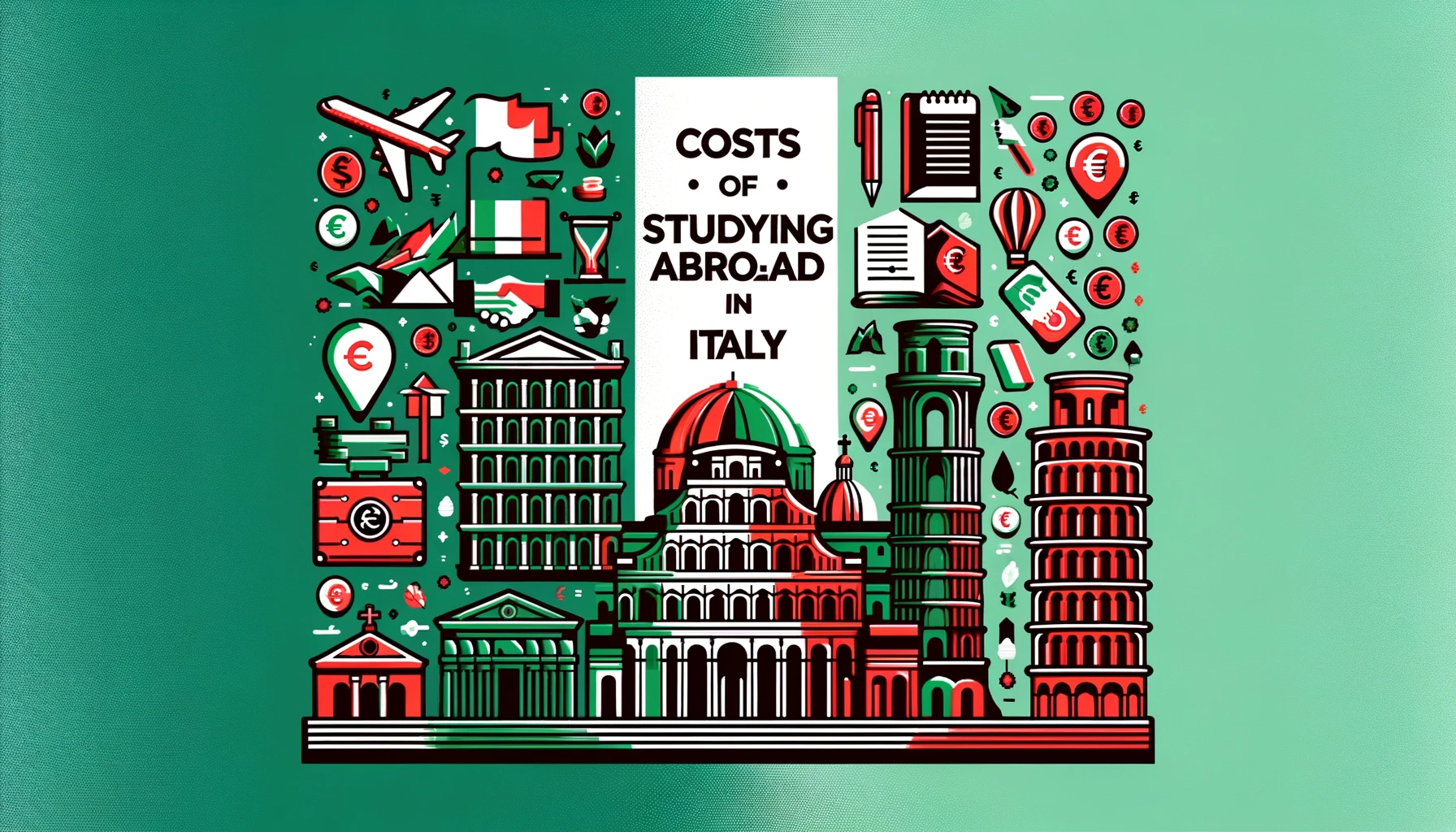Costs of Studying Abroad in Italy

Studying abroad in Italy offers students a unique blend of world-class education, rich cultural experiences, and breathtaking landscapes. However, understanding the financial aspects of studying abroad is crucial for proper planning and management. Here, we break down the various costs associated with studying in Italy, from tuition fees to living expenses.
1. Tuition Fees Tuition costs in Italy vary significantly between public and private universities and depend on the level of study and the student’s nationality.
- Public Universities: Generally, tuition fees at public universities in Italy are lower compared to those in many other Western countries. For EU students, fees can range from about €900 to €4,000 per year. Non-EU students might pay slightly more, but this is still generally more affordable than in many other European countries.
- Private Universities: Fees at private universities are higher, ranging from €6,000 to more than €20,000 per year. These institutions often offer specialized programs in areas such as business and fashion.
2. Living Expenses Living costs in Italy can vary widely depending on the city and lifestyle. Here’s what students can generally expect:
- Accommodation: Renting a room in a shared apartment typically costs between €300 and €600 per month. Costs are higher in major cities like Rome and Milan and lower in smaller cities or towns.
- Food and Groceries: Expect to spend around €150 to €250 per month on groceries. Dining out occasionally will increase this budget.
- Transportation: Public transportation is relatively affordable, with monthly passes costing about €25 to €50, depending on the city.
- Miscellaneous Expenses: This includes books, leisure, and incidental costs, which can be around €100 to €200 per month.
3. Additional Costs Students should also budget for initial and one-time costs:
- Visa and Permit of Stay: Non-EU students need to apply for a student visa and a permit of stay. Costs can range from €50 to €200.
- Health Insurance: Health insurance is mandatory for non-EU students, which can cost about €150 to €200 per year.
- Travel Expenses: Depending on the home country, the cost to travel to Italy can add significantly to the budget.
4. Scholarships and Financial Aid There are several scholarships and financial aid options available for international students:
- Italian Government Scholarships: Offered to foreign and Italian citizens living abroad for study or research.
- Erasmus+: A program for EU students that can help cover tuition and living expenses.
- University-specific scholarships: Many universities offer their own scholarships, which can significantly reduce the cost of tuition.
5. Cost-Saving Tips To minimize expenses, students can:
- Share accommodation: Sharing an apartment or living in university dorms can reduce living costs.
- Use student discounts: Many museums, theaters, and public transportation services offer discounts to students.
- Cook at home: Eating out in Italy can be tempting but cooking at home will save a significant amount of money.
Conclusion Studying in Italy can be an enriching experience, but it requires careful financial planning. Understanding all the associated costs—from tuition to day-to-day expenses—will help students manage their budgets effectively. With various scholarships and cost-saving strategies, the dream of studying in Italy can become financially attainable for many students.

